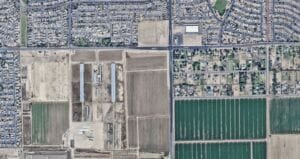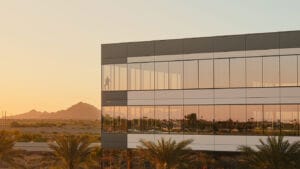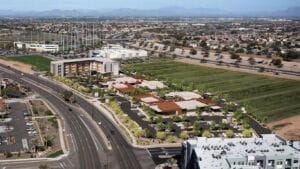Phoenix’s Roadrunner Elementary School is going green thanks to Hensel Phelps and a California-based organization
Investment in a child’s education takes on an entirely new meaning with the Green Schoolhouse Series project. Started in 2008, the Green Schoolhouse Series is in the process of creating the world’s first LEED Platinum design schoolhouse.
In Arizona, it’s happening at Roadrunner Elementary School in Phoenix. Hensel Phelps Construction Co. is the general contractor and one of the first companies to reach out to the project.
“Hensel Phelps’ participation is all about giving back to the community where our employees and their families live and work,” says project manager Alex Bertolini.
“Hensel Phelps’ teamwork, drive and passion for the project continues to amaze the (Cause and Effect Evolutions) team as well as the other partners that have signed onto the project,” says Stefanie Valles, public relations coordinator for San Diego-based Cause and Effect Evolutions, a cause marketing/business development organization.
The Green Schoolhouse Series is a collaboration bringing together corporations, foundations, school districts, communities, media outlets, and volunteers to build high-performance, environmentally-sustainable, LEED-Platinum designed Green Schoolhouses at Title I, low-income, public schools. Hensel Phelps was the right pick for the project because of its reputation in the school-building market as well as being a leader in sustainability, Valles says.
The work at Roadrunner Elementary, 7702 N. 39th Ave., will provide students the opportunity to learn the importance of sustainability and its relevance. Construction began in May and is expected to be complete in July.
Green Schoolhouse Series projects are not just rewarded “Platinum” because of sustainability features, but also for being an influence that ultimately increases students’ performance in school. More than 300,000 trailers are used as classrooms across the country. A quarter of U.S. classrooms are considered dangerous and cause health problems in students, leading to their absence and overall neglect of educational benefits.
According to Greening America’s Schools Reports, the American Federation of Teachers and National Clearinghouse for Educational Facilities, there is a significant improvement in the following areas:
- Improved learning: 26% progression in math and 20% progression in reading;
- Healthier students: 5% increase in attendance and 9% decrease in asthma-related absences;
- Cost savings: 33% reduction in energy usage and 30% reduction in water usage.
The founders of the Green Schoolhouse Series project, Marshall and Jeff Zotara, began school makeovers long before the company formed. In 2001 they influenced the growth of elementary school sustainability by implementing energy conservation and gardens.
The Green Schoolhouse Series focuses on students in K-12. The Safari model, which is being built at Roadrunner Elementary, will be completed for grades K-5. The Studio is for grades 6-8 and the Loft is for high school students. The project’s purpose at Roadrunner will lead the students and community through a journey of discovery of sustainability through the plan’s technology and education.
While the school is intended for students to move forward in education, the architectural plan, produced by architectural firm Stantec, was designed entirely backwards. All the components were donated before the building process began; therefore the design had to revolve around the various materials that were provided.
If the features mentioned weren’t fascinating enough, the schoolhouse construction would not be built by contractors but by at least 1,000 volunteers. Now that’s an investment in education.
Cause and Effect Evolutions “looks and asks for any skilled volunteers that would like to give back (to the community),” Valles says, as well as the corporate sponsors of the project. More than 1,000 volunteers have donated their time and effort into producing the LEED Platinum design schoolhouse. The volunteers were presented with an “accelerated extreme home-makeover schedule, which is unlike any other building project,” Bertolini says.
The Safari model was also rewarded the Edward E. Kirkbride award in May 2011 for excellence in educational and innovative planning and design. Roadrunner’s added on, versatile space will affect students, parent groups and the community.
“The Green Schoolhouse is geared toward a modern learning environment and provides students with a green mode of thinking,” Bertolini says.



